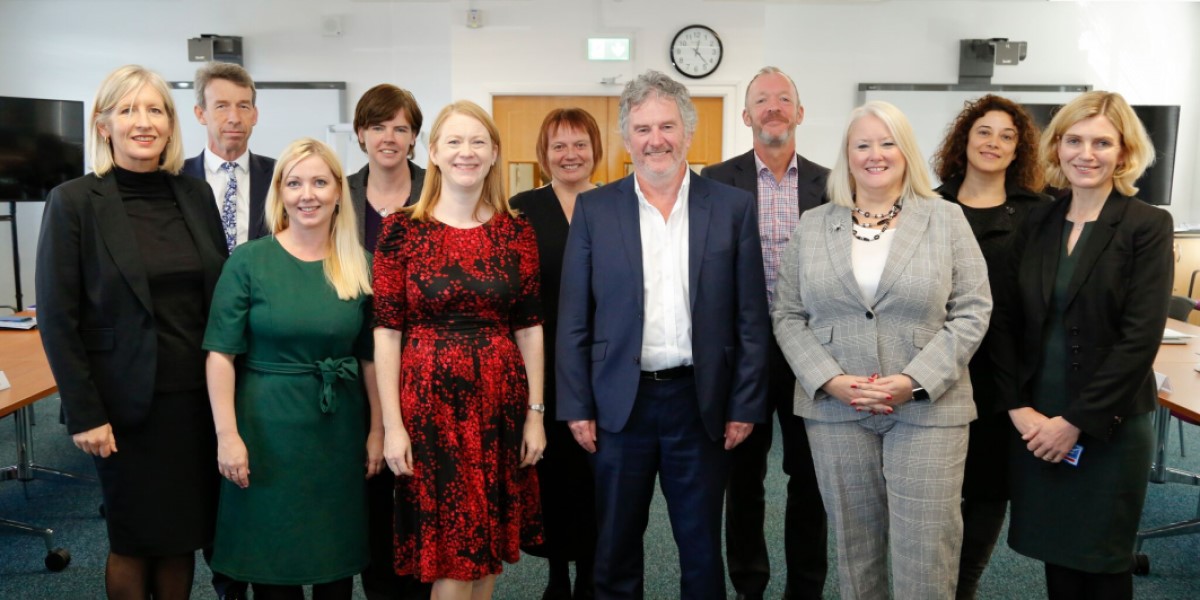Our failure to protect the environment has contributed to the spread of COVID-19
COVID-19 has made it real and personal for a much wider part of the world’s population than ever before that the health of all life on the planet is connected (human, animal, plant, ecosystems) and mutually dependent. In a way this is not news as the WHO estimates that some 60 percent of all viruses that infect humans come from animals.
But today individuals across the world share the personal experience, to different degrees, of the price we pay for disregarding the environment. The connections among human, animal, plants and ecosystems make the protection of the environment not just a “nice to have,” but an essential precondition for everyone’s well-being. And not in a distant future.
This recognition needs to come hand with hand with the realisation that the connections among humans, animals, plants and ecosystems are profoundly influenced by human activities. So how we carry out human activities has direct implications for how the environment can either support or undermine the well-being of everyone, particularly the most vulnerable.
Our interactions with wildlife are affected by deforestation, the expansion of agriculture into previously undisturbed areas and international trade in wildlife which alter the normal circulation of viruses as well as shift the composition, abundance and behaviour of viral reservoir species and ultimately increase contact-rates between virus-carrying animals and humans.
Genetic analyses of the virus suggest it originated in bats although it might have come into contact with humans through the pangolin, a little-known ant-eating mammal that has become the world's most trafficked mammal. Pangolins were found at the seafood market at the outbreak's epicentre in Wuhan. While the connection with the pangolin is not fully proven, the point remains that the global illegal traffic of wild animals allows for animal species and humans to come into close proximity when animals’ immune responses are inhibited by multiple stressors and the shedding of pathogens is enhanced. As a result, wildlife markets provide ideal conditions for pathogen spill-over.
In addition, intensive production patterns in agri-business and broader production and consumption patterns have contributed to the spread of the virus from animals to humans. Large-scale land acquisitions have both pushed small-scale farmers to engage in farming of wild species and to relocating to wilder areas. This contributes to increasing contacts between wild and domesticated species and humans leading to the spread of pathogens from animals to humans.
In other words, as the Guardian reported, humanity’s destruction of biodiversity (the variability of life forms, such as different animal and plant species) has created the conditions for new viruses to spread. Our efforts to protect nature and its benefits for human well-being (such as the purification of water and air, pest and disease control, pollination, soil fertility and resilience to climate change) are failing across the board. A 2019 global assessment underscored that ‘most of nature’s contributions to people are not fully replaceable and some are irreplaceable’ and that the rate of global biodiversity degradation during the past 50 years is unprecedented in human history.
As a result, current negative trends in biodiversity will undermine progress towards 80% of the Sustainable Development Goals (SDGs) targets related to poverty, hunger, health, water, cities, climate, oceans and land. This is due to unsustainable agriculture and forestry, overfishing, pollution, and climate change.
Our limited efforts in tackling climate change have also contributed to the current global health emergency. Climate change accelerates the transmission of infectious diseases because changes in weather patterns contribute to changing the boundaries and characteristics of existing animal habitats. In addition, as animals experience increased stress from these migratory changes, their immune systems may become weakened, thereby increasing both the risk of infection and amount of viral replication once infected. These risks cause higher concerns for children, as “climate change will harm the poorest and most vulnerable children first, hardest and longest.”
A healthy environment provides multiple positive responses to COVID-19
The flipside of the coin is that a healthy environment contributes in numerous ways to responding to the global health emergency which we are experiencing.
For example, people living in areas with lower air pollution face lower risks of premature death from COVID-19 because air pollution already affects heart and lung conditions and therefore their ability to fight off respiratory infections. Even short-term exposure to air pollution can increase the severity of lung infections. Access to clean water is of course essential in preventing people from contracting and spreading the virus via hand-washing.
In addition, biodiversity provides at least four key responses.
Firstly, our exposure to diverse natural environments strengthens our immune-regulatory system.
Secondly, access to diverse natural spaces benefits our psychological, cognitive and physiological health and serves as a treatment for depression, anxiety and behavioural problems, all of which have been widely felt as a result of lockdowns. More generally, exposure to biodiverse green spaces also provides health benefits for children’s development and improves life expectancy.
Thirdly, ecosystems contribute to water purification and air quality by directly removing air pollution and affecting meteorological patterns. Biodiversity also contributes to climate change mitigation and adaptation, thereby helping to manage the pandemic and its effects upon human populations.
Finally, biodiversity is a critical source for medicinal developments. For example, as underscored by the UN Special Rapporteur on Human Rights and the Environment, 10 of 14 major classes of antibiotics are derived from micro-organisms. And more specifically, a recent blog post by the Woods Hole Oceanographic Institution reveals that the test used to identify the coronavirus was derived from an organism found in the deep sea.
COVID-19 has then starkly demonstrated that the protection of the environment is necessary for human wellbeing.
Why do human rights matter?
In legal terms, the interdependence of human wellbeing and the environment translates into the recognition of the inter-dependence of human rights and the environment, as outlined in the UN Framework Principles on Human Rights and the Environment.
On the one hand, a safe, clean and heathy environment is necessary for the fulfilment of the human rights to life, to the highest attainable standard of physical and mental health, to an adequate standard of living including the rights to food and to housing, to safe drinking water and sanitation, to participate in cultural life and to the right to development itself.
On the other hand, the exercise of such human rights as the right to a healthy environment, to freedom of expression and association, to education, information, participation and effective remedies are vital to the protection of the environment.
COVID-19, caused by the failure to protect the environment, has impacted on a wide range of human rights including the most basic right to life itself, as well as freedoms of movement, autonomy, family life and non-discrimination due to the consequent social restrictions of lockdowns. A broad range of economic and social and cultural rights have also been severely impacted including the rights to an adequate standard of living including to food and housing, to livelihood and way of life, to health and education and to social security and social protection.
Looking at the current crisis through the lenses of human rights, therefore, underscores “must haves” for society, particularly for those that may be most vulnerable to the negative impacts of COVID-19 and of the responses to the pandemic.
For instance, during the crisis, governments’ decisions to “lower environmental standards, suspend environmental monitoring requirements, reduce environmental enforcement” are “likely to have negative impacts on a wide range of human rights including the rights to life, health, water, culture, and food.” Furthermore, governments are needed to immediately respond to any limited access to water for “people living in informal settlements, those who are homeless, rural populations, women, children, older persons, people with disabilities, migrants, and refugees” as this will make them more likely to get infected, further isolated and unable to continue earning a living.
Planning for post-COVID-19 recovery to “build back better” and not return to business as usual, as called for by the UN Secretary-General, is equally important from the perspective of human rights and the environment.
This is why COVID-19 is characterised as an urgent “message from nature” according to the UN Environment Programme: the neglect of the environment explains in part the lack of resilience to COVID-19 in so many countries, including developed countries such as the US and UK, as outlined above.
In addition, the current situation is in very significant part the result of the limited implementation of economic and social rights due to unfettered free-market approaches and austerity, as outlined by the successive UN Special Rapporteurs on Extreme Poverty and Human Rights, Professors Alston and de Shutter.
The consequent inadequacy of economic, social and environmental protections is now being exposed by the impact of the pandemic and exacerbated by the climate emergency. The combined effect of all of this is causing many people to experience violations of their rights to food, housing, health, decent work, social security and not to be subject to inhuman and degrading treatment.
For all these reasons, a growing number of environmental experts, youth representatives and young doctors have called for green investments that support the human right to health, as well as “investments in sustainable infrastructure [that] can increase labour income, productivity, and GDP,” such as linking carbon targets to cash injections into airlines, improving the handling of medical waste under national health funds, prioritising loans for sustainability innovation and providing direct payments to farmers supporting biodiversity conservation.
Along similar lines, human rights experts have underscored the opportunities to identify recovery approaches that are aligned with global and national efforts to ensure business responsibility to respect human rights, including the nexus between human rights and the environment.
Significant steps towards human rights leadership in and by Scotland
The UN High Commissioner for Human Rights has echoed the call for “building back better” and recognised that the pandemic, along with the related climate crisis, present a “colossal test of leadership” for our times.
Human rights leadership can meet such a test, both during the crisis and beyond. The Scottish Government and Parliament have expressed multiple commitments to leadership: they are fully committed to both the Sustainable Development Goals and the Paris Agreement on climate change and to set Scotland on a trajectory towards an inclusive, green and wellbeing economy.
In addition, Scotland took the strategic step of establishing a National Task Force for Human Rights Leadership to effectively implement the international human rights framework to improve people’s lives in Scotland. While the Task Force was established months before the pandemic, its work can enable Scotland to “build back better,” and make a strategic and values-based recovery from the COVID-19 crisis.
Building on recommendations presented in 2018 by Scotland’s First Minister’s Advisory Group on Human Rights Leadership, the Task Force has two key objectives:
- to carry out a participatory process to help develop a new human rights legal framework in Scotland which will clearly recognise internationally recognised civil, political, economic, social, cultural and environmental rights drawn from the UN framework of human rights treaties; and
- to develop a capacity-building programme to support public authorities and different sectors of society to play their part in applying these rights to improve people’s everyday lives.
The human right to a healthy environment has already been recognised in over 100 countries in the world but its recognition through the leadership approach in Scotland is very innovative. The combination of the participatory approach to legal recognition and the focus on building capacities for implementation can provide real opportunities for different public bodies, civil society, business and others to identify together what can make this right a reality in Scotland.
Firstly, the participatory process allows the human rights and environmental communities to come together, learn from one another and reach out to others such as the health community to develop together a path towards the practical implementation of the human right to a healthy environment at all levels. This is inspired by the concept of shared leadership: it will take everybody’s efforts to effectively implement the new human rights framework.
Secondly, the Task Force process is inspired by the idea of “everyday accountability”: human rights, including the human right to a healthy environment, need to be factored into everyday decision-making (including planning, budgeting and impact assessments), as well as in scrutiny activities (by such as the Scottish Environment Protection Agency and Audit Scotland). As part of this, civil society and the general public need to be empowered to exercise their rights and hold authorities to account. So while effective access to justice remains essential, it will serve as a last resort.
Future blog posts by our environmental and human rights academic centres will contribute to discuss more specific aspects of human rights leadership, the environment and human dignity to support the work of the National Task Force and inform relevant international processes, such as the Climate Change COP 26 next year in Glasgow.

The Scottish Human Rights Task Force, pictured at an event in 2019.


